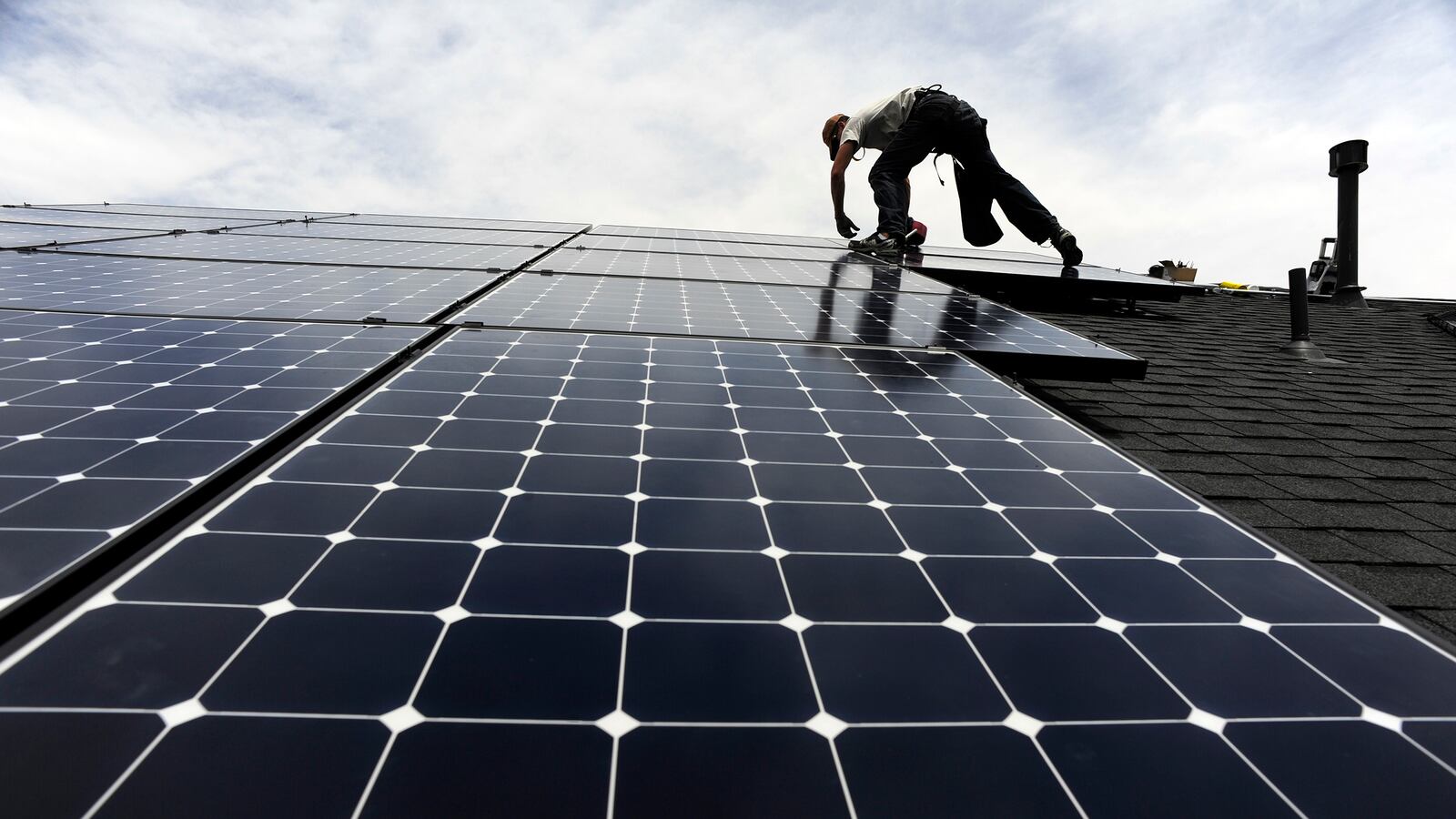There’s a conundrum in the green energy world. People at the lower end of the income scale would benefit most from energy- and cost-saving measures like installing solar panels or weatherizing homes. Reducing a family’s annual expenditures on energy by $1,000 has the same economic effect as boosting its annual income by $1,000. But they are also the last able to afford the upfront investments that can bring long-term savings.

Grid Alternatives, a nonprofit based in California, is aiming to square this circle. Started in 2001, the nonprofit has created a business model that brings solar panels to low-income households—allowing them to lower their carbon footprint and reduce electricity bills. All while providing valuable training.
“We get volunteers and job trainees and provide a low-income family that would never have been able to get a solar installation panel otherwise with green power and lower bills,” said Erica Mackie, an engineer and co-founder of Grid Alternatives. “That gives them additional money in their pockets for things like food and clothes for their kids and savings for college.”
According to Mackie, Grid Alternatives saves each home it outfits with photovoltaic panels an average of 80 percent off its electricity bill. So far, the organization has completed more than 3,000 installations on family homes throughout California and Colorado. The company is also expanding its reach to New York and New Jersey.
“California is the largest solar economy in the country, and that’s where we got our start during the California energy crisis,” said Mackie. “But as we are expanding nationally we really look at the combination of where are the families paying the high utility cost and could use the savings and where is the existing solar technology where they can hire workers.”
Installing photovoltaic systems on roofs isn’t a cheap process. Much like Habitat for Humanity, the nonprofit, charitable home builder, Grid Alternatives relies on volunteer work as well as donations in order to do its work. Grid Alternatives receives equipment donations from solar panel and inverter manufacturers such as SunPower and Enphase. Mackie believes that the companies donate the expensive equipment to help prove that solar panels aren’t limited to the wealthy and can be beneficial to all households. “The more adoption of solar by regular folks, or even people who you wouldn’t think about as traditional solar consumers, the more adoption from all of us,” she said.
The volunteer base for Grid Alternatives is enormous. So far, over 10,000 people have volunteered for the organization. Many of them do so for the job training the company offers to people interested in getting involved with the solar industry. Grid Alternatives trains people with the skills they would need to get started as a technician or solar panel installer, a typical entry-level position for paying solar jobs. “We are the teaching hospital of solar,” Mackie said. “This is the place where people can really learn how to install a system—to really be able to get that first job you have to already have done something and been on a roof and install a system.”
Many of the volunteers at Grid Alternatives have been hired full time by solar companies. Sinclair Wallace, 43, a former team leader at Grid, had no trouble finding a job in the solar industry right when he started looking. “Last year … it wasn’t until January that I was able to look for a job, and I got a job right away.”
Since last spring Wallace has worked at three solar companies, working his way up the ladder. During every job search he waited no more than three days before he was offered a position. Now he’s a lead installer. He attributes his ability to get a job in the solar industry to his work with Grid. “It was vital because it gave me the confidence to get up on the roof and figure things out. There were times when they would bring me up there and I would try the layout out. They were really great at making sure you were safe,” he said. “[Employers] wouldn’t even consider me if I didn’t have some etiquette up there.”
Grid chooses the houses it works on through an application process that determines their eligibility based on income level and whether a home’s roof is fit for solar panels.
“We envision a world where families, regardless of income, can have access to clean power and bills they can afford,” Mackie said. “For us we are really about solutions and it’s about solving a problem one family at a time, one rooftop at a time.”






